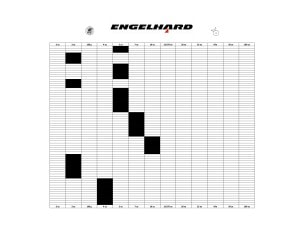These patterns have allowed us to make further educated refinements and result in significantly lower mintage figures than previously believed. It is important to note that some serial number ranges are shared between variety, or weight class, though it is clear that these numbers are not repeated. For example, a particular 5oz variety may have a serial number range from 50xxx – 54xxx while another 5oz variety or completely different weight class may have assignments within the 52xxx range, without number replication. Our studies have discovered only one anomaly of two 5oz examples with identical 56669 serial numbers, both of identical variety. These two examples have been studied in hand and fully authenticated. We further believe the letter-prefix C (Canada), P (Plainville, Massachusetts) and W (Engelhard West – Anaheim, CA) serial numbers in 10oz class were of course independent runs, confirmed by duplicate numbers across these three letter-prefix registries. At this time, we believe the W serial numbers in 100oz class were likely not independent runs.
‘An MS64 1920-S double eagle exemplifies the earliest of the many melt rarities towards the end of the Saint-Gaudens series. Only 100-150 examples are believed known out of a mintage of 558,000, and this PCGS-graded piece is surpassed in numerical grade by only eight coins at the major grading services. This coin sold for $99,875.00′ - CoinWorld | February 7, 2015
Imagine only 100-150 examples remain from a 558,000 mintage. Compare that with the fact that most Engelhard Legacy Ingots had mintages of less than 500. It is becoming a very clear reality that only a few known examples of certain varieties may actually exist today. Many studies have shown that less than 3% of the US Silver Dollars minted actually exist today, as millions of coins were melted in the 1979/1980 and 2011 market spikes. Could older Engelhard ingots have had a survival rate of 50%? Not likely. Maybe 25%? We doubt it. Remember, these were known as ‘junk’ and ‘scrap’ silver until less than a decade ago and older ingots, in general, had the highest probability of being melted. 10%? Perhaps, but likely lower than that. We are coming closer to a concise answer on this, and continuing to dial in the material consequence of how survivor-ship accentuates ultimate valuation. In a recent example, a collector in our group procured one of only three known 2oz ingots from a Midwest bullion dealer in 2012, saving it from being sent to the local smelter and destroyed. Incidentally, 2oz ingot 353059 sold via eBay auction on March 8, 2015 for $5,000 – an astounding $2,500/oz!
Our total mintage estimate of all Engelhard Tier 1 ingots is less than 24,500 and interestingly, at any given time, we have observed on average only two Tier 1 examples for sale in searching all worldwide auction venues, eBay being the largest. This equates to .00007% (7 in 100,000) of the total mintage currently for sale. In the Tier 2 category, we estimate a total mintage of less than 165,000 bars and ingots of all varieties, and surprisingly there are on average only 13 available for sale, equaling .00008% (8 in 100,000). And for the more common Tier 3, we estimate overall mintage of less than 200,000 of all varieties, with an average availability of only 29 for sale, or .00015% (15 in 100,000). In comparison to rare coins, there are currently over 250 listings for 1916-D Mercury Dimes, which is an average availability of .001% (1 in 1000) of it’s 264,000 mintage for sale at any given time. There are currently over 600 listings for a 1914-D Lincoln cent, with a 1.193m mintage, an availability of .0005% (1 in 2000). These comparisons suggests that surviving Engelhard Legacy Ingots are undeniably more rare than many rare numismatic coins, and that existing survivors may possibly be 5x to 10x+ less than our estimated mintages. In other words, the Engelhard survivor rate might be 20% in some cases, but likely far lower than 10% overall.
As we continue to add serial numbers and further define production ranges of each variety, we will update the Definitive Page mintage estimates accordingly. Thank you for visiting!
 |
 |
